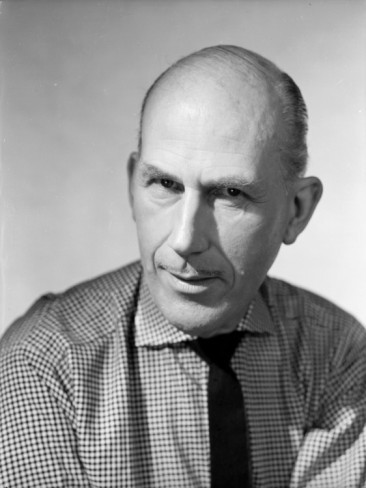
Cuthbert Collingwood Tinling
About
Teddy Tinling, was a British tennis player, fashion designer, spy and author. He was a firm fixture on the professional tennis tour for over sixty years.
Cuthbert Collingwood Tinling was born in Eastbourne, England in June 1910. His nickname was "Teddy".
In 1923, suffering from bronchial asthma, his parents sent him to the French Riviera on doctor's orders. It was there he began playing tennis, particularly at the Nice Tennis Club where the then biggest star of the game, Suzanne Lenglen, would practice. Despite Tinling's youth, Lenglen's father asked him if he would umpire one of her upcoming matches and he would go on to be her personal umpire for two years in between a short career as a player himself. This friendship with Lenglen led him to his first Wimbledon Championships in 1927, where he became player liaison until 1949.
The Look
Tinling turned instead to the new phenomenon, sportswear. Standard wear at the time for women on the tennis court was a blouse or jersey and a pair of culottes, an outfit which Tinling thought utterly lacking in femininity or style. His designs were controversial from the outset—Tinling's first commission, for Joy Gannon's Wimbledon debut in 1947, was a dress with a small colored border at the hem. A similar design the following year for champion Betty Hilton's Wightman Cup match so outraged Hazel Wightman she threatened to ban color—if not Tinling—from future Wimbledon games. Into this brewing storm blew Gertrude "gorgeous Gussy" Moran. Could Ted, she wrote from California, design her a dress for Wimbledon? A very colorful dress? Tinling correctly predicted that an all-white rule would prevail for the 1949 games and so he designed instead a dress in proper white of satin-trimmed rayon, which shimmered, he said, as did Moran herself. Came the fitting, it was apparent that a pair of panties would be required to complete the ensemble. As legend has it, Tinling finished off the pants with a bit of lace edging and with this act inadvertently secured his place in fashion history. Tinling's clothes, however, were not banned, and they continued to provoke Wimbledon officialdom as they continued to bring a sense of flair and glamour to center court. Tinling had an easy rapport with the stars of the game. He designed to suit the playing style and personality of the players he came to know so well, matching fabric, trim, and cut to the individual. Within the profession Tinling was respected as the supreme arbiter who represented players to management in an official capacity not only at Wimbledon, where he was reinstated in 1982, but at the other three Grand Slam events as well as on the Slims tour. His encyclopedic knowledge of tennis and tennis players made him an oral historian of the game, and keeper of its traditions. For six decades Ted Tinling and tennis were synonymous.
Who Wears It
Suzanne Lenglen, Gussy Moran, Carol Fagero, Martina Navratilova, Chris Evert, Evonne Goolagong and Virginia Wade